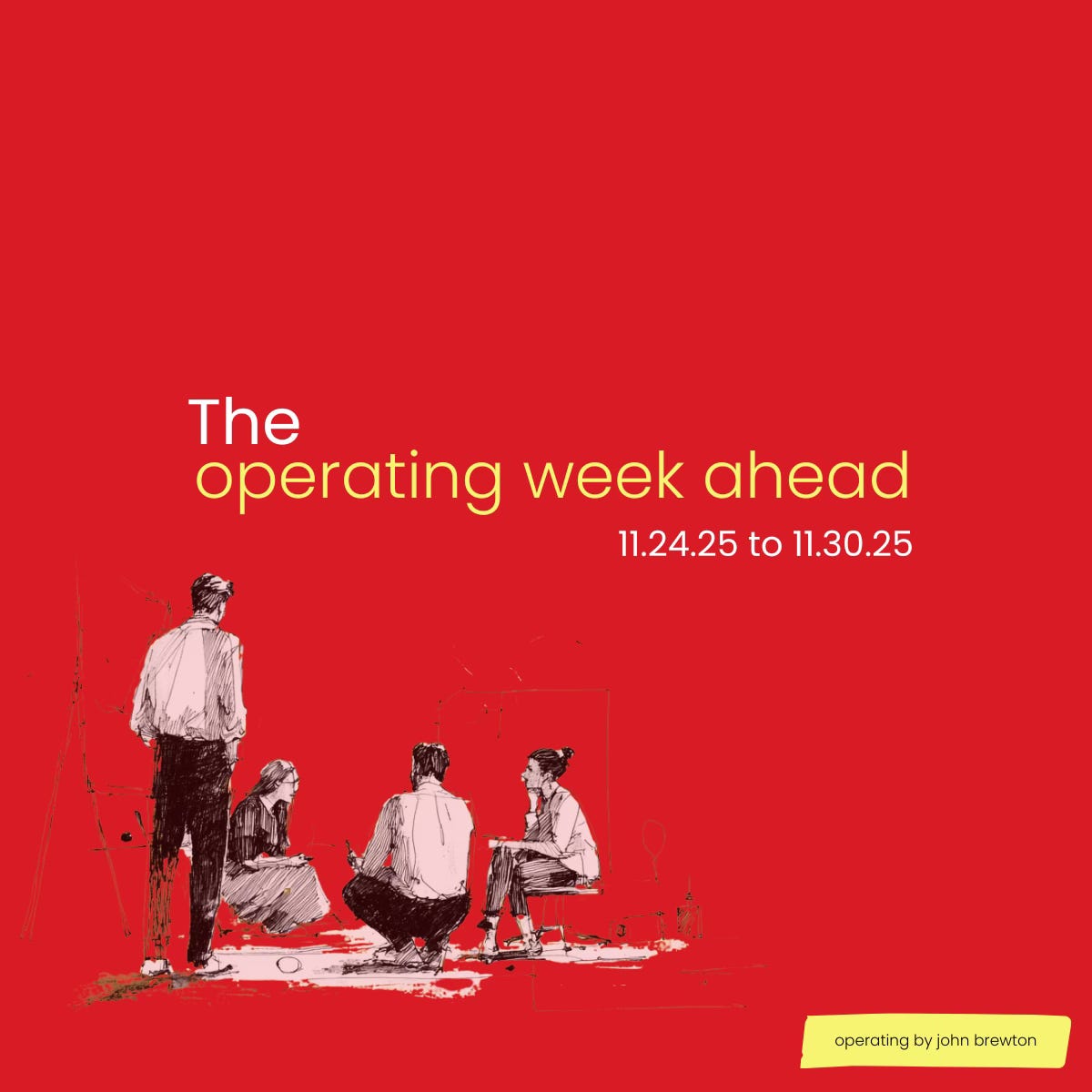Check out these reader favorites:
Markets faced a critical inflection point this week as the artificial intelligence boom collided with sobering economic reality. While Eli Lilly became the first pharmaceutical company to reach $1 trillion in valuation, driven by unprecedented demand for weight-loss drugs—broader economic indicators deteriorated sharply. Consumer sentiment collapsed to near-record lows, the job market weakened substantially, and major tech stocks saw their steepest three-week losses since April as investors questioned whether actual productivity gains can justify AI valuations.
The headline tension: $380 billion in private capital is flowing into AI infrastructure (data centers, power systems, cooling equipment)—a genuine, transformative investment comparable to the railroad era or electrification boom. Yet, this AI-driven growth masks a fractured economy where lower- and middle-income households face persistent affordability crises, unemployment is rising, and consumer psychology has shifted decisively to a negative outlook. This is a two-speed economy where winners are winning big, but broad-based economic health is questionable.
The week ahead will be critical: Consumer confidence data, inflation readings, Black Friday/Cyber Monday spending, and real-time retail earnings will reveal whether current market optimism is justified or if recession risks are building beneath the surface.
A Correction Begins?
The S&P 500 declined approximately 4% in November, with the Nasdaq posting its steepest three-week loss since April. Tech giants bore the brunt: Nvidia fell 3.6%, Oracle declined 4.1%, and Tesla slid 6.6%. Goldman Sachs CEO David Solomon warned of a “likely” 10-20% equity market correction within the next two years, while even prominent hedge fund manager Michael Burry, known for AI enthusiasm, disclosed substantial short positions in Nvidia and Palantir Technologies.
The Core Risk: Seven companies (Amazon, Microsoft, Alphabet, Tesla, Nvidia, Meta, Apple) now represent over one-third of the S&P 500’s value. If these AI-centric stocks correct sharply, the wealth effect on affluent households could trigger a broad economic slowdown.
Consumer Sentiment Hits 20-Year Lows
Consumer sentiment fell dramatically to 51 in November from 53.6 in October—a staggering 30% decline from December 2024. This near-record low reflects three converging pressures:
Coffee prices surged 18.9% year-over-year; consumers remain psychologically anchored to past price shocks despite nominal inflation cooling.
October job cuts reached levels not seen since 2003; tech and warehouse sectors were hit particularly hard.
Income inequality has deepened into a true “K-shaped economy” where wealthy households continue spending while middle and lower-income Americans face persistent affordability crises.
Tariff Rollbacks Signal Policy Pivot
President Trump announced rollbacks on November 14 of tariffs on more than 200 food items (coffee, beef, bananas, cocoa, tropical fruits). However, price relief will be slow: existing inventories imported under higher tariffs remain in warehouses. Tariffs on Brazilian coffee (30% of U.S. imports) were reduced by 10%, but a 40% baseline tariff remains under the IEEPA framework.
1. Eli Lilly Reaches $1 Trillion
On November 21, Eli Lilly became the first publicly traded pharmaceutical company to reach $1 trillion market cap, driven almost entirely by its weight-loss medications Zepbound and Mounjaro. These drugs generated over $10.09 billion in combined revenue last quarter—more than half of total company revenue—with Wall Street projecting the global weight-loss drug market could reach $150 billion by 2030.
Why It Matters: This signals a fundamental shift in where investors see growth outside of AI mega-caps. The obesity treatment market represents a multi-decade secular growth opportunity with proven efficacy and expanding addressable market (early-2026 oral pill approval expected to drive adoption).
2. Warner Bros. Discovery Auction Kicks Off
Media Consolidation Accelerates
Three major suitors formally submitted bids on November 20: Paramount Skydance (pursuing the entire company), Comcast/NBCUniversal (bidding for specific assets), and Netflix (disciplined approach). WBD aims to conclude the process by mid-December.
What’s Driving It: This reflects both streaming wars’ intensity and traditional media’s structural decline. Paramount Skydance rallied 3.8% on deal optimism, while Disney fell 7.7% after missing Q4 revenue and warning of a potential $3.5 billion annual loss from a YouTube TV blackout dispute.
3. Walmart CEO Succession & Disney’s Streaming Bet
Walmart announced John Furner, 51, will succeed Doug McMillon as CEO effective February 2026, a “clean break” transition from strength, positioning the retail giant for AI-driven transformation. Meanwhile, Disney’s Q4 results revealed linear TV revenue collapsed 16% while streaming (Disney+/Hulu) surged 39% in operating income, adding 3.8 million new subscribers.
Bottom Line: This compressed week provides critical signals on consumer health and Fed policy direction heading into year-end. Black Friday/Cyber Monday spending will be the real-world test of whether wealthy consumers are still driving the economy despite sentiment collapse.
Three major themes emerged from professional discussions and business publications:
1. AI Adoption is Stuck in “Pilot Purgatory”
Harvard Business Review’s latest research found that while 89% of companies have AI pilots, only 23% have achieved production deployment at scale. The barrier isn’t technical—it’s organizational.
Operating Insight: Treat AI adoption as a change management initiative, not a technology project. Set 90-day forcing functions for pilot go/no-go decisions; assign executive sponsors from business units (not just IT); establish clear metrics beyond accuracy scores (user adoption rates, process time reduction, measurable ROI).
2. Human Empathy Becomes Competitive Advantage
As AI automation handles routine customer interactions, human touchpoints must deliver disproportionate empathy. HBR case studies from healthcare and financial services show companies that reserve human service for “high-stakes moments” (complaints, cancellations, life events) improve NPS and customer lifetime value while reducing overall support costs.
KEY TAKEAWAY FOR YOUR DECISION-MAKING
The economy is at an inflection point. AI infrastructure investment is real and transformative, but concentrated in mega-cap tech stocks and data center/energy plays. Meanwhile, consumer sentiment has collapsed, job market momentum has stalled, and affordability pressures are intensifying for middle-income households.
For Investors: Consider profit-taking in concentrated tech positions; healthcare and infrastructure plays offer exposure to AI themes with less valuation risk.
For Business Leaders: AI pilots without organizational change management will fail. Shift marketing spend from paid media to community-building. Prepare for a bifurcated consumer market where premium/luxury segments remain resilient while mass-market retailers face structural headwinds.
For Policymakers: Wednesday’s PCE and GDP data, plus Black Friday spending, will reveal whether the two-speed economy is sustainable or if broad-based weakness is building.
READY FOR MORE?
Upgrade to Premium for:
Full deep-dive analysis of all 7 major business strategy articles with actionable frameworks
Extended week-ahead calendar with day-by-day earnings breakdowns
Comprehensive industry event listings with strategic relevance
Full synthesis of investment and organizational strategy implications
Exclusive downloadable charts, sector analysis, and research reference library
Subscribe today to receive next week’s full briefing with premium analysis.
Sources: Wall Street Journal, Financial Times, New York Times, Bloomberg, The Economist, Harvard Business Review, Reuters, CNBC, Deloitte. Full citation list and methodology available in premium edition.
Operating by John Brewton goes deep on what it takes to build, scale, and optimize modern companies. This breakdown analysis is just the starting point. Check out last week’s analysis of Amazon’s current operating strategy to see more.
John Brewton documents the history and future of operating companies at Operating by John Brewton. He is a graduate of Harvard University and began his career as a Phd. student in economics at the University of Chicago. After selling his family’s B2B industrial distribution company in 2021, he has been helping business owners, founders and investors optimize their operations ever since. He is the founder of 6A East Partners, a research and advisory firm asking the question: What is the future of companies? He still cringes at his early LinkedIn posts and loves making content each and everyday, despite the protestations of his beloved wife, Fabiola, at times.










